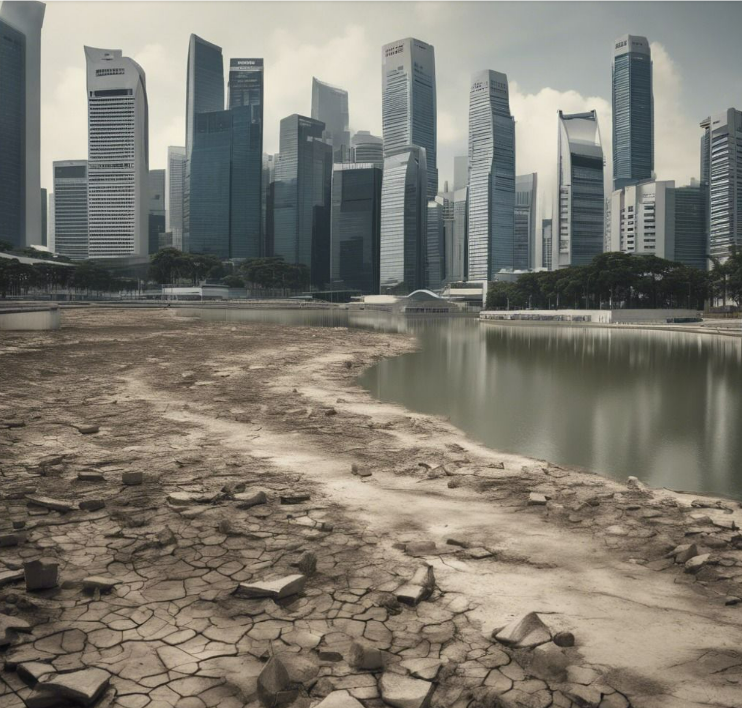Access to Clean Water in Singapore

📷: An AI-generated image: We asked Gencraft what it could possibly look like if we had no access to clean water.
Water is essential to life, and access to clean water is one of our most basic human needs. Yet, millions of people live without access to clean water. According to 2020 statistics from the United Nations World Water Development Report 2023, 26% of the world's population (about 2 billion people) don’t have access to safe drinking water. In fact, the World Health Organisation (WHO) shared that some 1 million people are estimated to die each year from diarrhoea as a result of unsafe drinking-water, sanitation and hand hygiene.
In 1912, the Straits Times wrote, “Singapore now has one of the finest water supplies in the world, and to get that on a tiny island which has no river much bigger than a ditch must have meant long and earnest study and a fine capacity for making the most of available means.” True enough, today, our tap water quality is well within the WHO Guidelines for Drinking-water Quality, and Singapore Environmental Public Health Regulations 2019.
This access to clean water in Singapore has become so commonplace that is often #TakenForGranted. Imagine this: you turn on the tap in your homes, and without a second thought, you drink a glass of the water that comes out – because you know that our tap water is suitable for drinking directly from the tap without any further filtration.
Yet this access has not always been the case, and did not come naturally. This is because Singapore is one of the most water-stressed countries in the world, due to the lack of groundwater and natural freshwater bodies, as well as limited land for water storage facilities of harvested rainwater.
We have gone through dry spells in the past that reduced our water stocks so drastically that our taps sometimes ran dry: in 1963 to early 1964, water levels in Singapore and in the Tebrau River area of Johor plummeted so low that authorities had to impose restrictions on water use. Another dry spell in early 1971 led to warnings of water rationing and the launch of our first “Water is Precious” campaign as part of our public education programmes to encourage water conservation.
Today, Singapore is internationally recognised as a model city for water management and an emerging Global Hydrohub – a leading centre for business opportunities and expertise in water technologies. As our demand for water grows (roughly 782 Olympic-sized swimming pools of water a day!), coupled with more erratic weather changes, water shortages could potentially happen again.
While we appreciate having a robust, diversified and sustainable water supply from Four National Taps, at the individual level, we should continue to form good habits in water consumption for we never know when the next water disruption might be.
References 🔗: https://unesdoc.unesco.org/ark:/48223/pf0000384657 and https://www.who.int/new.../fact-sheets/detail/drinking-water
#MakeEveryDropCount #GoBlue4SG #Water #Singapore #GoBlue4SG #WeAreTotalDefence #TogetherWeKeepSingaporeStrong #WaterforPEACE
Visit Facebook and Instagramfor more content.

